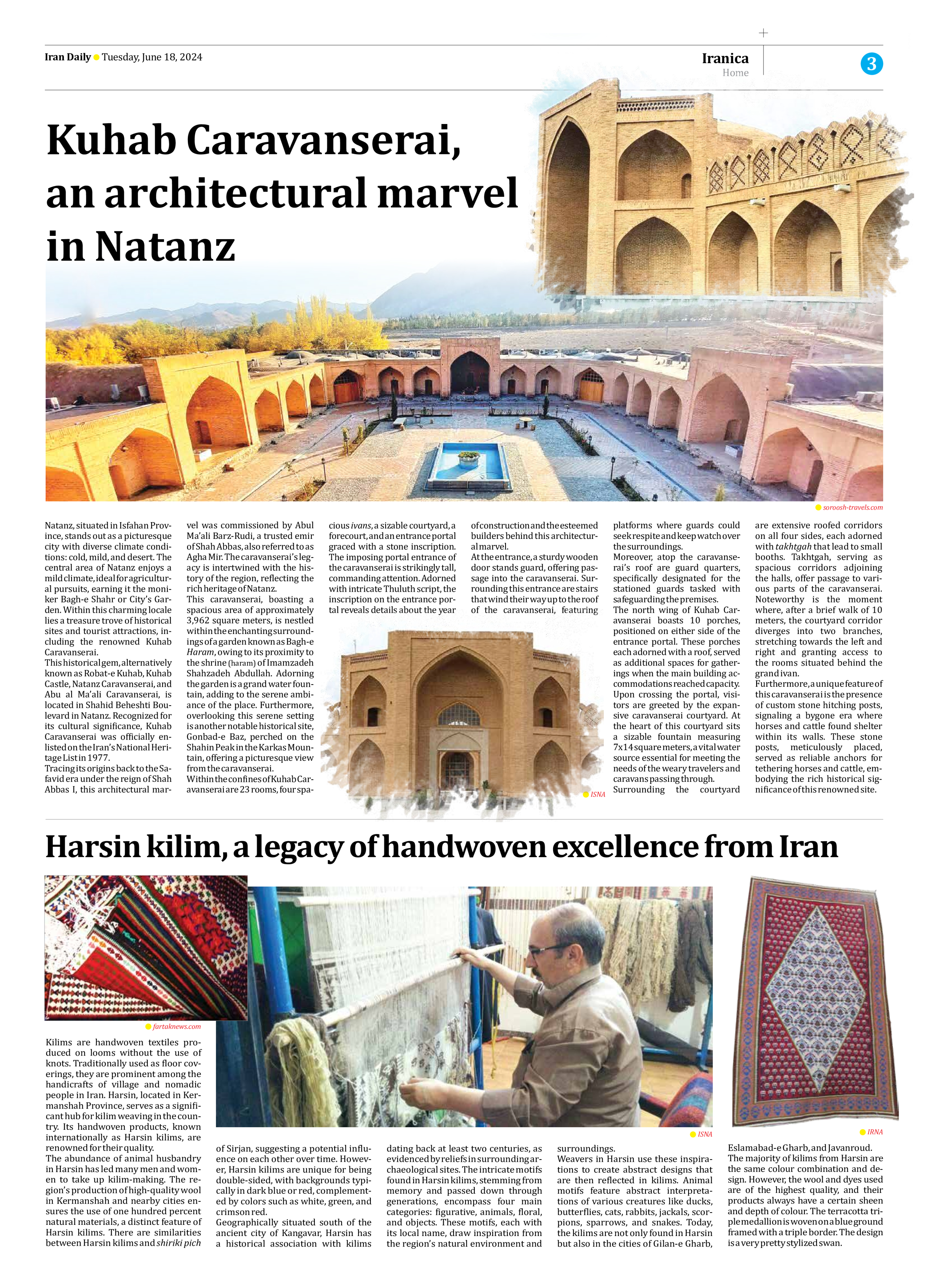
Copy in clipboard...
Harsin kilim, a legacy of handwoven excellence from Iran
The abundance of animal husbandry in Harsin has led many men and women to take up kilim-making. The region’s production of high-quality wool in Kermanshah and nearby cities ensures the use of one hundred percent natural materials, a distinct feature of Harsin kilims. There are similarities between Harsin kilims and shiriki pich of Sirjan, suggesting a potential influence on each other over time. However, Harsin kilims are unique for being double-sided, with backgrounds typically in dark blue or red, complemented by colors such as white, green, and crimson red.
Geographically situated south of the ancient city of Kangavar, Harsin has a historical association with kilims dating back at least two centuries, as evidenced by reliefs in surrounding archaeological sites. The intricate motifs found in Harsin kilims, stemming from memory and passed down through generations, encompass four main categories: figurative, animals, floral, and objects. These motifs, each with its local name, draw inspiration from the region’s natural environment and surroundings.
Weavers in Harsin use these inspirations to create abstract designs that are then reflected in kilims. Animal motifs feature abstract interpretations of various creatures like ducks, butterflies, cats, rabbits, jackals, scorpions, sparrows, and snakes. Today, the kilims are not only found in Harsin but also in the cities of Gilan-e Gharb, Eslamabad-e Gharb, and Javanroud.
The majority of kilims from Harsin are the same colour combination and design. However, the wool and dyes used are of the highest quality, and their products always have a certain sheen and depth of colour. The terracotta triple medallion is woven on a blue ground framed with a triple border. The design is a very pretty stylized swan.







